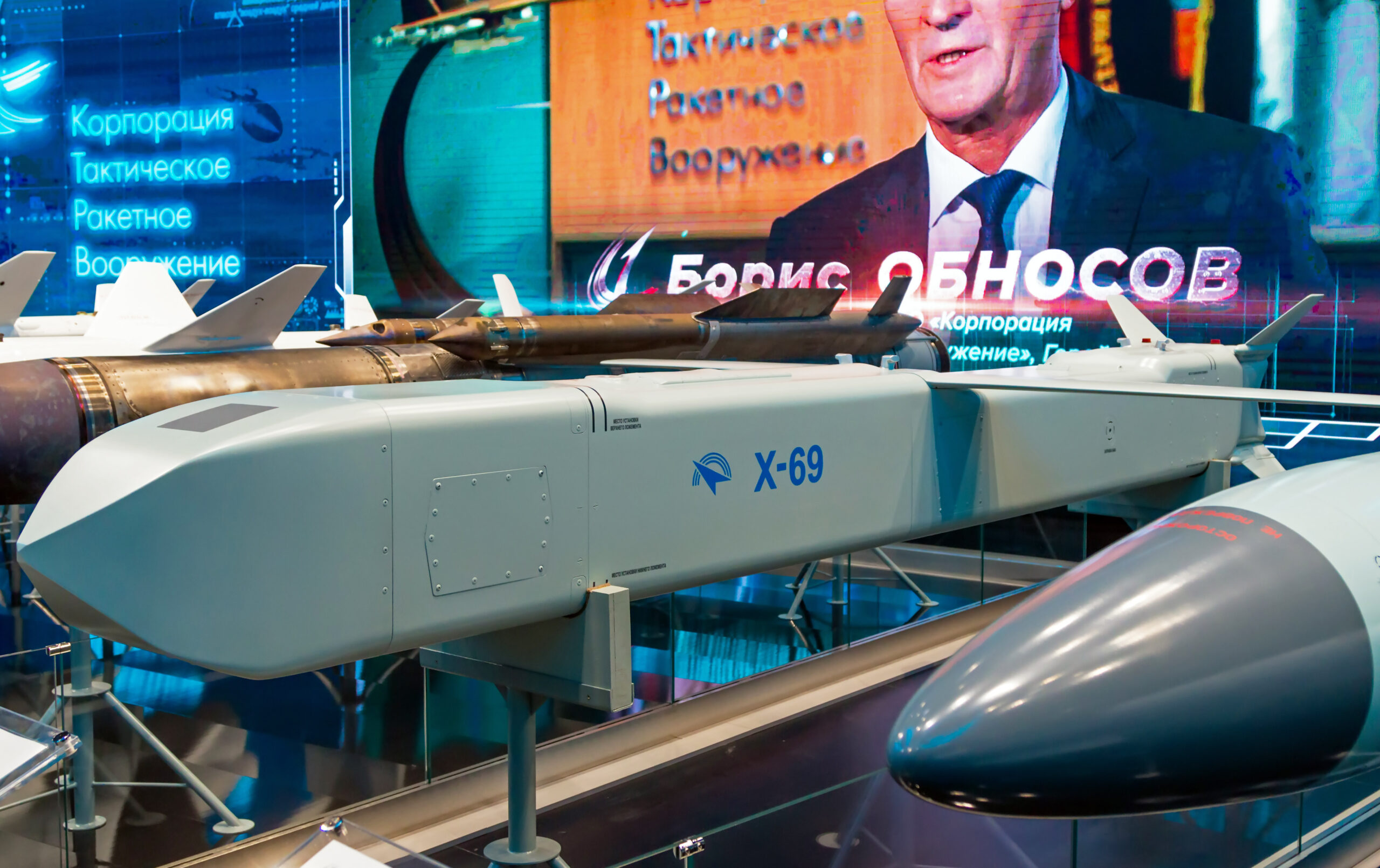Russia has used another new precision-guided munition during the war in Ukraine, according to Ukrainian reports. The Kh-69 is widely associated with the Su-57 Felon new-generation fighter, although it could equally have been launched by a ‘legacy’ Russian tactical aircraft. Moreover, if it was used, the appearance of the Kh-69 would continue a spate of reports of new missiles being employed by Russia in Ukraine, including weapons of both domestic and foreign origin.
A Ukrainian military blogger recently posted a photo purporting to show the wreckage of a Kh-69 on the Telegram messaging app — one of the rear fins is shown. The caption states that the missile was “downed” during a massive missile strike on February 7, 2024. This was the same day on which Russia’s hypersonic Zircon cruise missile was reportedly also used in attacks on Ukraine, according to claims from a Kyiv-based research institute.
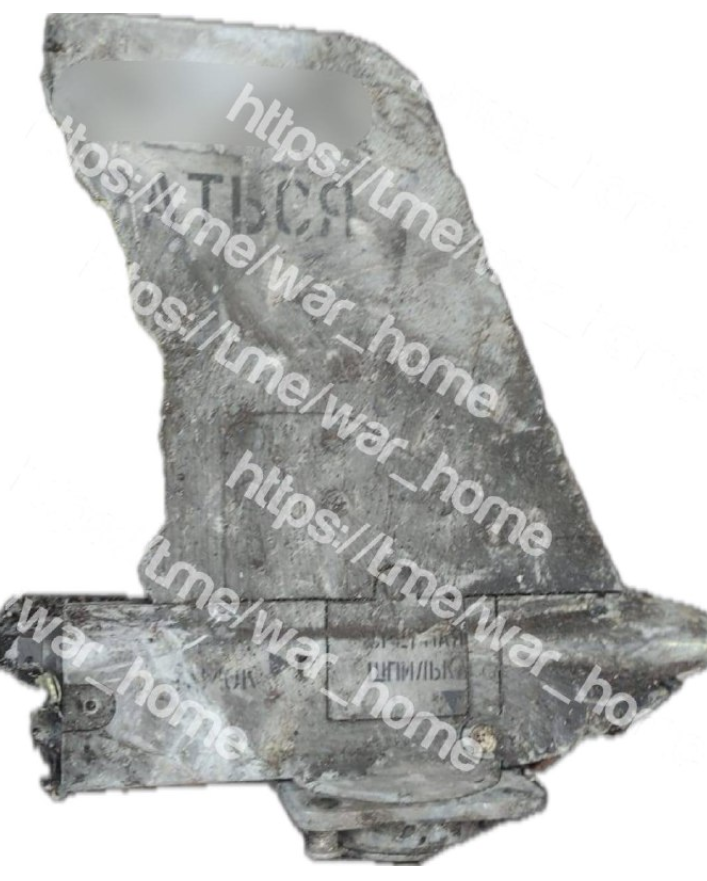

Further details were offered on X by the @war_monitor_ua account that tracks Russian military aviation activities. That source claims that three Kh-69s were launched against Ukraine overnight on February 7-8, together with three of the widely used Kh-59 standoff missiles. It further claims that, of these six missiles, five were shot down, during attacks on the Poltava, Sumy, and Mykolaiv regions.
While the tail section does look identical, that’s all we have to go on. But provided that the evidence does indeed show a fragment of a Kh-69, the use of the missile in Ukraine is undoubtedly less groundbreaking than that of the Zircon, if indeed that missile was also used recently in combat, as reports state. However, it would point to an apparent growing willingness on Russia’s part to expose newly fielded missiles to combat.
As of September last year, the U.K.-based International Institute for Strategic Studies (IISS) think tank reported that the Kh-69 was undergoing flight testing, describing it as an “air-launched land-attack cruise missile likely akin to the European Storm Shadow or Taurus KEPD 350 missiles.”
The previous February, IISS said that the Kh-69 was “likely now in the final stages of development or entering production.”
The Kh-69 has been known about well in advance of that, however.
The missile now known as the Kh-69 began life under a different name, the Kh-59MK2. It was developed by the Raduga company, part of Russia’s Tactical Missile Corporation (KTRV).

When it first appeared, in 2009, the Kh-59MK2 looked very much like the earlier Kh-59MK, a standoff anti-shipping missile. The major difference was the guidance system, with the active radar seeker replaced by an inertial navigation system combined with GPS/GLONASS for mid-course updates, and an electro-optical digital scene-matching area correlation (DSMAC) system for the run-in to the target. The new guidance system was apparently borrowed from the Kh-555 strategic cruise missile and was said to provide an accuracy of 10-16 feet.
It seems the Kh-59MK2 was pitched primarily toward export customers, with the hope they might invest in it. Currently, the website of Rosoboronexport, Russia’s state-run arms export/import agency, still offers it, but it’s unclear if it found any customers.
In 2015, however, the Kh-59MK2 was entirely reworked, emerging as a weapon with some low-observable features now incorporated. Essentially, only the guidance system was unchanged, the missile now featuring a boxy, trapezoidal-section body, tailored to fit in the weapons bay of the Su-57. At the top of the body is a pair of pop-out wings, with four fins at the rear that also deploy in flight. The turbofan engine was now internal, in contrast to the Kh-59MK2 which featured an external nacelle.
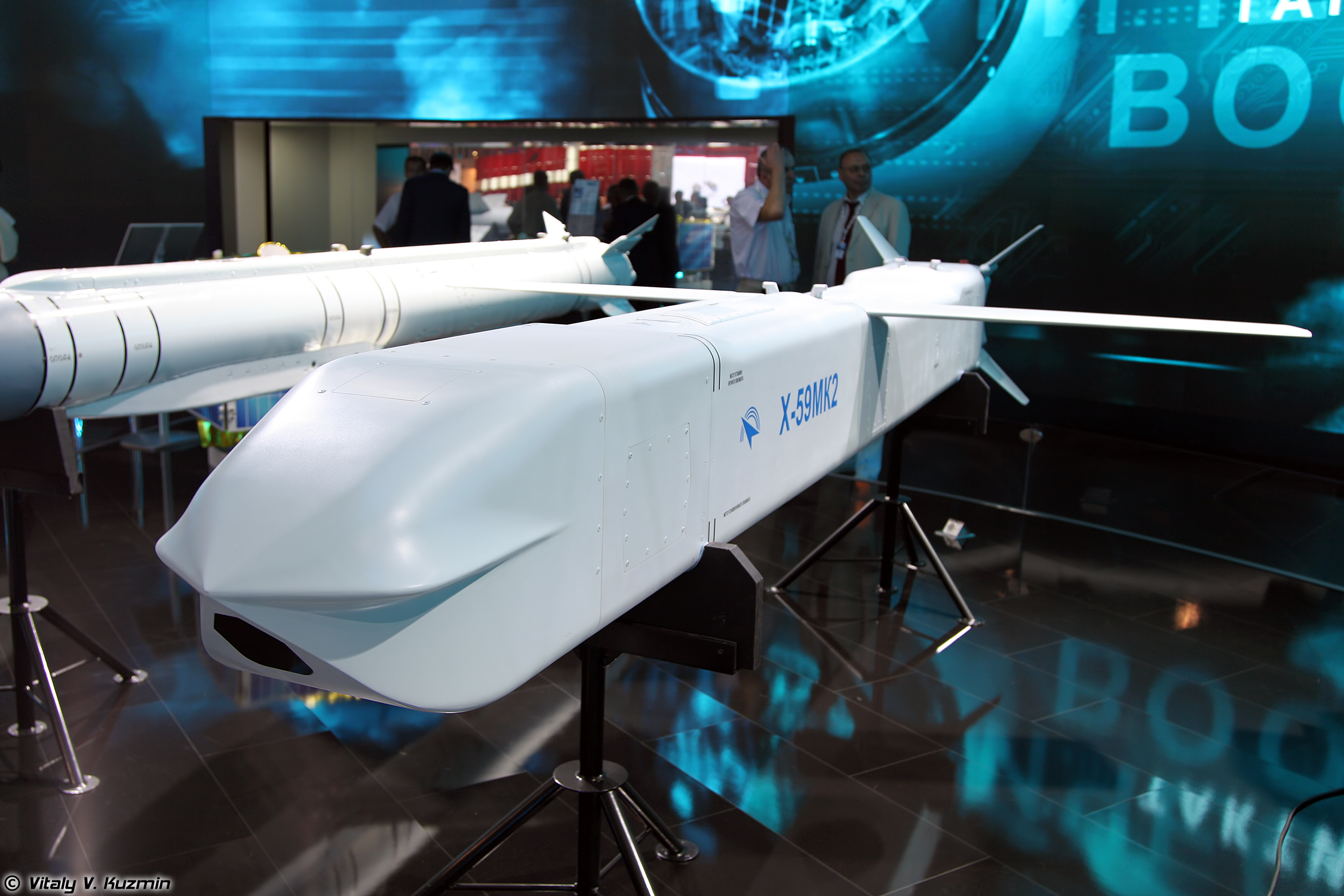
It seems that no foreign customers bought the redesigned Kh-59MK2 either, but with Russia procuring the Su-57 (albeit in very limited numbers, for now), Raduga developed a version for domestic use, known as the Kh-69. This also features some changes compared with the remodeled Kh-59M2, with a simplified nose profile lacking the characteristic flanges (low observable and aerodynamic features) and the window in the nose that was related to the DSMAC guidance system.
The Kh-69 is primarily intended to hit hardened targets with known coordinates and is said to have a range of at least 186 miles. One or more targets can be programmed into the missile before flight, and coordinates can reportedly also be uploaded into the missile’s guidance system once the launch aircraft is airborne.
Published characteristics include a weight of around 1,700 pounds, an operating speed of up to 621 miles per hour, and the option of either a penetration or a cluster warhead weighing up to 680 pounds. The exact degree of low observability is unclear, but the shape of the weapon is said to offer some degree of reduced radar signature, as well as allowing it to fit inside a Su-57.
Very likely, in fact, the Kh-69 was designed specifically for the Su-57, but the manufacturer says it can also be carried by the MiG-29K, MiG-35, Su-30MK, Su-34, and Su-35. Russia has widely employed the last two types in the war in Ukraine.
While there have been claims of Su-57s having been exposed to operations in the Ukraine conflict, there’s no firm evidence of this.
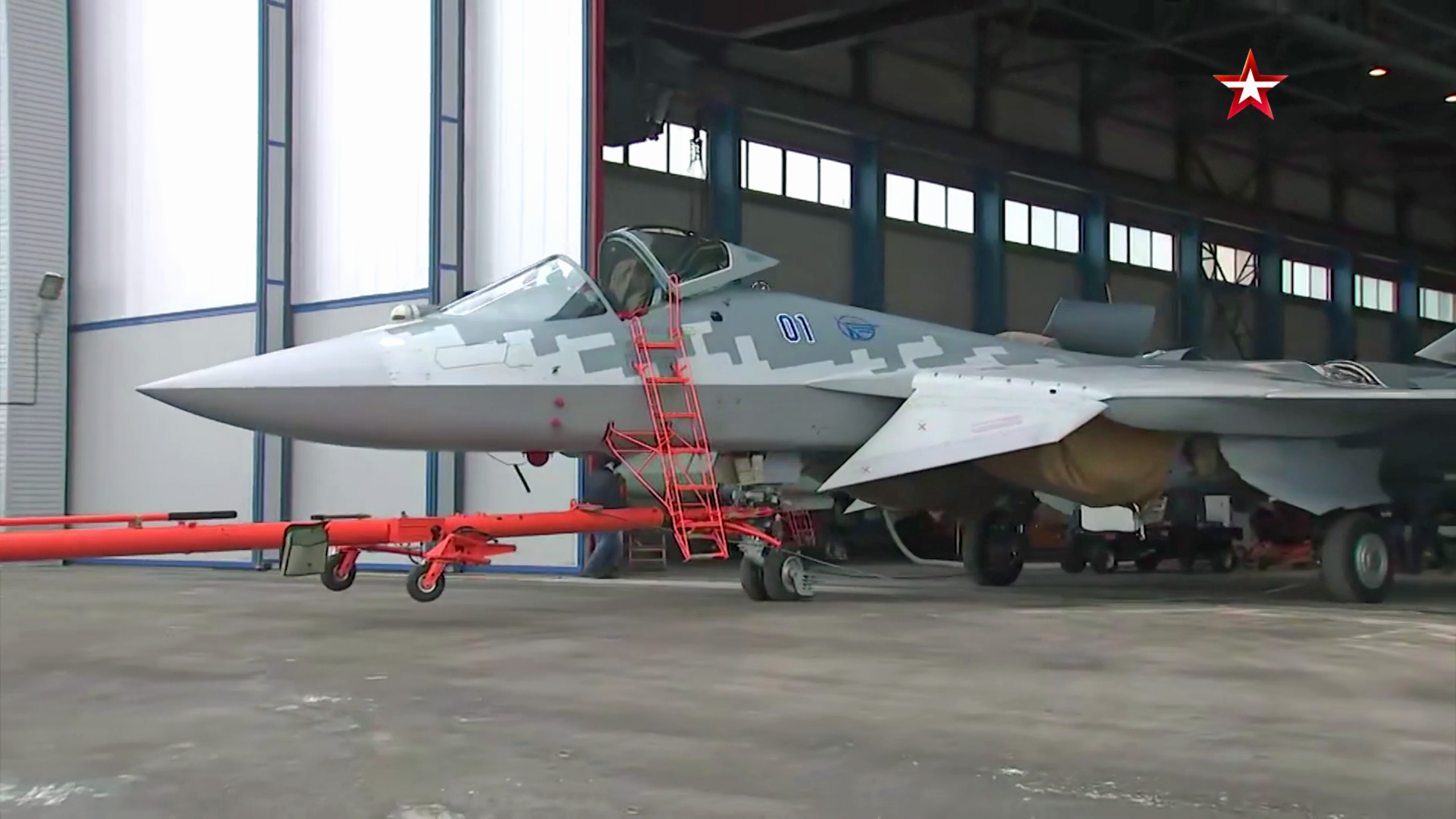
In terms of capabilities, the Kh-69 has been compared in the past to the Storm Shadow and its French SCALP EG equivalent, which can fly out to around 155 miles. However, the non-export configurations that Ukraine has received offer roughly double that range. The Russian weapon is also notably smaller than the Storm Shadow/SCALP EG, with a length of around 13 feet 9 inches compared to 16 feet 9 inches. Overall, it’s about two-thirds the size and payload of Storm Shadow/SCALP EG.
Nevertheless, compared with some of Russia’s other tactical air-launched munitions, especially the ad-hoc glide bombs that are now widely used, the Kh-69 offers a significant leap in capability. The Kh-69 would be much more accurate, as well as offering considerably greater range and survivability, although this also comes with a much higher price tag.
Overall it sits somewhere in between lower-end air-launched guided weapons like the glide bombs and much high-end, longer-range, and heavier-hitting systems, like the Kh-101 air-launched cruise missile. In some ways, it fills a similar role as Israel’s Delilah in terms of range, but the Kh-69 lacks the more advanced electro-optical or infrared guidance package that is found on its progenitor and Delilah. The Kh-69 is also markedly larger.
With Ukraine now fielding more advanced Western-supplied air defense systems, the Kh-69 would appear to be well-suited for striking well-defended targets within Ukraine. At the same time, its range would also allow many targets to be hit even when launched from within Russian airspace, meaning that it doesn’t necessarily require delivery by a Su-57 to be effective.
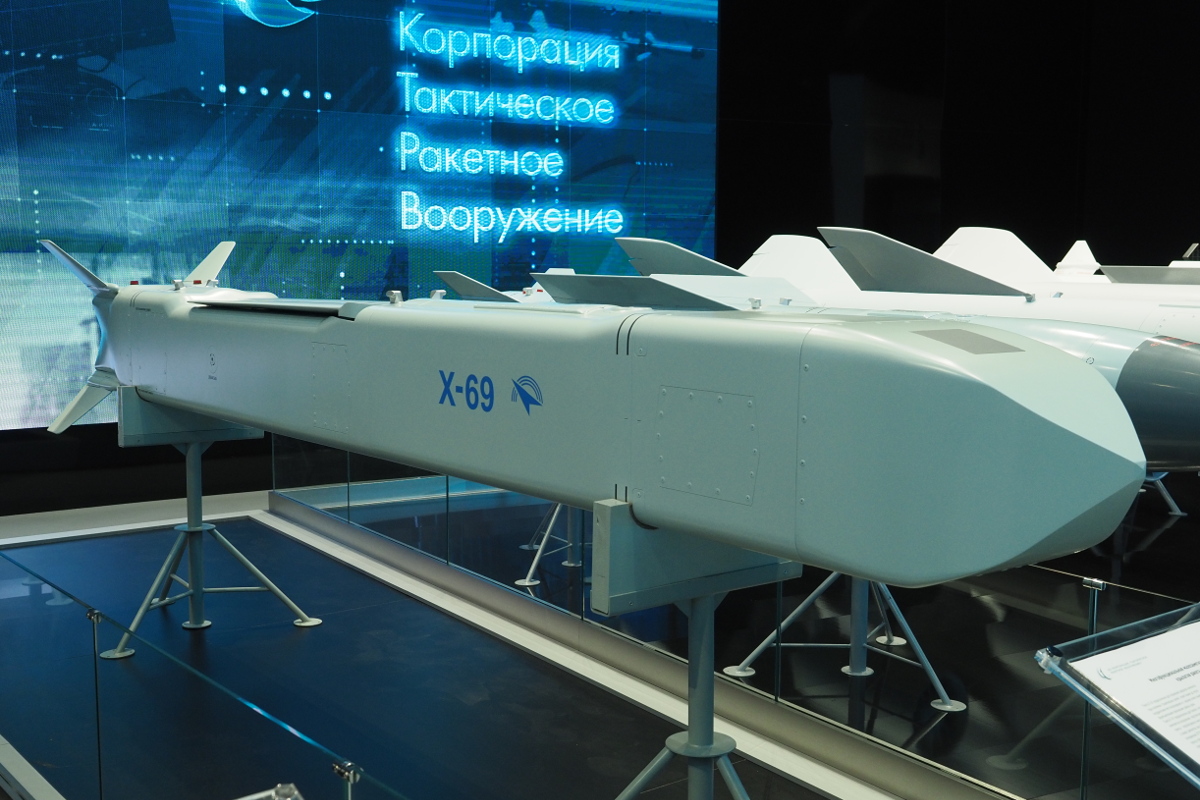
At this point it’s worth recalling that, during the Su-57’s brief deployment to Khmeimim Air Base in Syria in 2018, an official video that was released subsequently showed one of the aircraft Su-57s releasing a Kh-69 missile. However, it’s also possible that this was video footage from a test in Russia, a theory supported by the red-painted missile, normally indicative of a test round.
Regardless, the appearance of the Kh-69 in combat in Ukraine at this point would not be entirely surprising, and its delivery by a Su-57 should certainly not be ruled out.
As well as the aforementioned Zircon, other new Russian-made missiles have reportedly been exposed to combat in the Ukrainian war. Other examples include the Grom tactical missile, which you can read more about here. The Kinzhal air-launched ballistic missile — an evolution of the Iskander-M short-range ballistic missile — was also unproven in combat until the full-scale invasion of Ukraine.
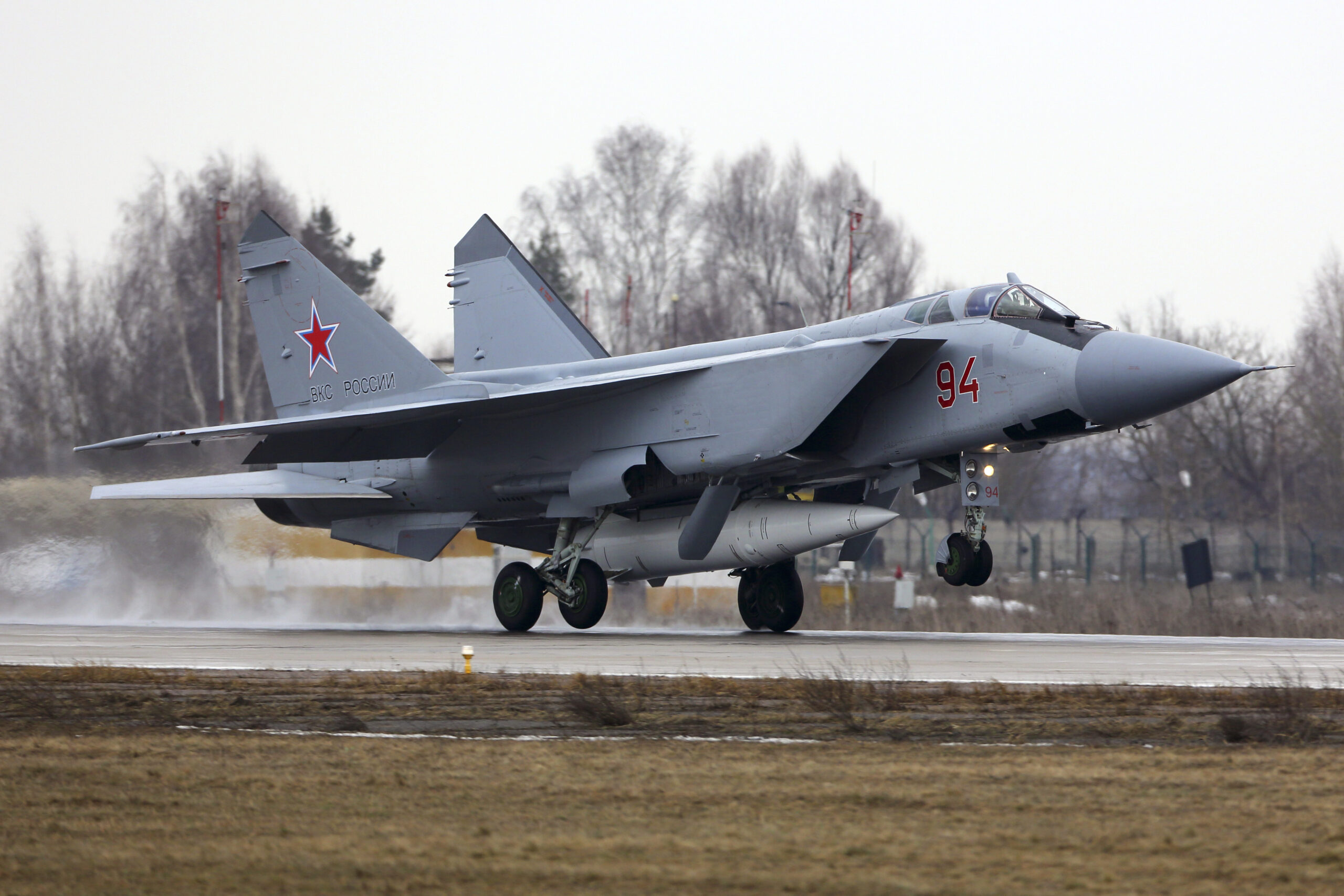
Most likely, a major driver for using these weapons is the desire to test their capabilities in a challenging operational environment. It provides a chance for tactics to be refined and, potentially, for any lingering problems to be ironed out.
It’s also likely that the short-range ballistic missiles (SRBMs) provided to Russia by North Korea, and also used in Ukraine in recent weeks, have been employed, to a significant degree, to gauge their capabilities, especially in comparison with similar types of weapons from domestic production.

In terms of the Russian-designed weapons, successful showing in an operational environment might also help decide which weapons should be prioritized for large-scale production. This is especially important considering the constraints on production output, especially for high-technology weapons.
As we have explored in the past, since the start of the full-scale invasion of Ukraine, there have been repeated questions about the ability of Russia, hampered by crippling international sanctions, to manufacture high-technology weapons without access to Western components. Moreover, the capacity to build such weapons in scale has also been challenged. With the scope for the quantity production of precision-guided weapons limited, it makes sense to ensure that the most effective ones are being prioritized.
For now, we cannot be entirely sure that Kh-69s were indeed used on the February 7 raids, but there are certainly compelling arguments as to why Russia might use this weapon now. If it was used in the attacks last week, we may well not have to wait long for further and more compelling evidence of its employment in combat.
Contact the author: thomas@thedrive.com
